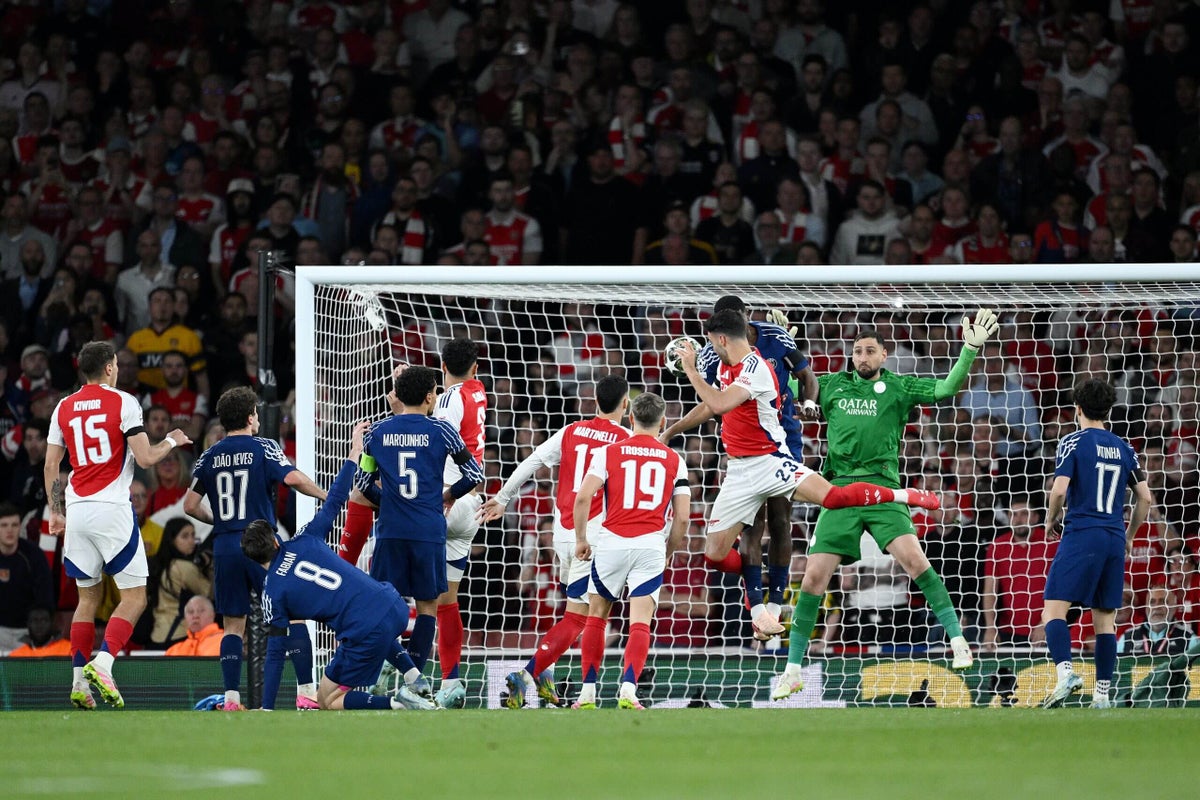Is Arsenal's Offside Free-Kick Strategy Still Effective? A Tactical Analysis
Arsenal's innovative offside trap-busting free-kick routine, famously deployed during the 2022-2023 season, captivated football fans and analysts alike. But as the tactical landscape evolves, the question remains: is this strategy still a potent weapon in Mikel Arteta's arsenal? This tactical analysis delves into the effectiveness of this approach, examining its strengths, weaknesses, and potential future applications.
The Genesis of the Strategy:
Arsenal's free-kick routine cleverly exploited the offside rule. By positioning players in an offside position before the ball was kicked, but ensuring they were onside when the ball was played, they created a surprising scoring opportunity. This intricate maneuver required precise timing, exceptional technique from the set-piece taker, and a level of understanding and coordination rarely seen. The element of surprise was crucial, often catching opposing defenses off guard.
Strengths of the Offside Free-Kick:
- Surprise Element: The unexpected nature of the routine made it highly effective. Defenders, accustomed to traditional free-kick formations, struggled to adapt quickly enough.
- Overload in Attacking Third: The sheer number of players positioned near the box created an overload, making it difficult for defenders to mark effectively.
- Creative Solution to Defensive Walls: It offered a way to bypass the defensive wall, a common tactic used to counter free kicks.
Weaknesses and Countermeasures:
- Predictability: As the strategy gained popularity, opponents started anticipating and adjusting their defensive setups. The element of surprise, once its greatest strength, diminished.
- Risk of Offside Call: The fine margins involved meant a slight miscalculation in timing or ball trajectory could easily result in an offside call.
- Dependence on Specific Players: The successful execution relied on precise delivery and the quick reactions of attacking players, making it vulnerable if key players were absent or out of form.
Tactical Adaptations and Future Potential:
While the initial impact of Arsenal's strategy has somewhat lessened, the underlying principles remain valid. The team could adapt by:
- Variations and Camouflage: Incorporating subtle variations in the routine, disguising its intent to keep opponents guessing.
- Improved Timing and Coordination: Continuous practice and refinement of the technique would mitigate the risk of offside calls.
- Integration with Other Set-Piece Routines: Combining the offside free-kick with other set-play variations can make the team's attacking approach unpredictable.
Conclusion:
While Arsenal's initial offside free-kick strategy may have become less effective due to increased awareness amongst opponents, its underlying tactical concepts are still relevant. The team's ability to adapt and refine this approach will determine its long-term viability. Whether it remains a significant part of Arsenal's attacking repertoire remains to be seen, but its impact on the tactical landscape is undeniable. Its legacy serves as a testament to the ingenuity and constant evolution of football tactics. The future might see variations of this strategy employed by other teams, highlighting its enduring influence.
Keywords: Arsenal, free-kick, offside, tactical analysis, football strategy, Mikel Arteta, set-piece, Premier League, football tactics, football innovation.

